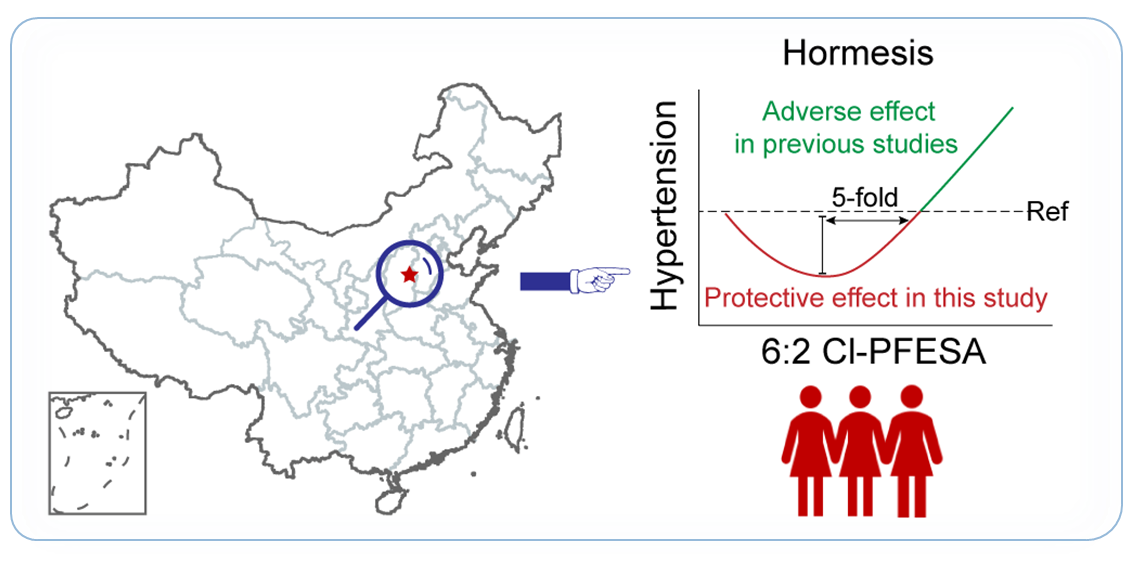Emerging contaminants have long been an environmental and public concern because of their prevalence, persistency, bioaccumulation potential, and adverse health effects despite their overall low concentration in the environment. We work at the interface of environmental chemistry and engineering to address the occurrence, environmental fate, reaction mechanism, and degradation techniques of emerging contaminants, particularly per- and polyfluoroalkyl substances (PFASs) and fluoro-pharmaceuticals. We use advanced instrumentation (UPLC-MS/MS, UPLC-HRMS) and quantum chemistry approaches (DFT, molecular dynamics) to tackle the fundamental mechanisms involved in the degradation and transformation of contaminants.
Most of the over 10000 commercialized PFASs either fail to be completely extracted or cannot be accounted for by targeted analysis. The possible existence of such hidden PFASs prevents the development of effective regulation or risk mitigation measures. Thus, we use multiple analytical techniques including target, nontarget, and total organic fluorine analysis to address the occurrence of PFASs in industrial products, typical source regions, and important environmental matrices (drinking water, coastal area, et al). We aim to develop a comprehensive PFAS database incorporating inventoried compounds, novel alternatives, and previously unknown structures. We also address their transformation in the natural and engineered systems, particularly by direct photolysis, reactive oxygen species, and microorganisms.

Density functional theory (DFT) calculations help to reveal mechanisms of chemical reactions and chemical-material interactions by studying intrinsic thermodynamics and kinetics. Validating reactions involving short-lived intermediates is made possible through structure optimization and the preference for a divergent pathway can be rationalized by the calculated rate constants, thus deriving the optimal reaction path. We conduct quantum chemical and molecular dynamic calculations on the degradation and transformation of emerging contaminants. We aim to unravel the underlying mechanisms for the reductive and oxidative defluorination of PFASs and fluoro-pharmaceuticals and to establish detailed and unambiguous reaction pathways. We also develop structural-reactivity relationships and answer the question of how chemical structure affects the intrinsic reaction mechanism.

The cost-effective and complete destruction of PFASs and fluoro-pharmaceuticals is the holy grail of research on the treatment and remediation of emerging contaminants. The challenge lies in that most conventional and well-established processes are not specifically designed for emerging contaminants, and their low concentration makes the situation even worse. We effort to develop innovative materials, advanced processes, and concentrate-and-destroy strategies to achieve complete degradation of recalcitrant contaminants, particularly PFASs and PPCPs. The techniques we are exploring include hydrated electron-based advanced reduction systems, sulfate radical-based advanced oxidation systems, functionalized nanosized zerovalent iron, particularly sulfidation, and enhanced microorganisms. By combing theoretical calculations and life cycle assessment, we are targeting the bench-scale fundamental research as well as the practical strategy for application in water treatment and site remediation.

PFASs are essential chemicals used in almost all industry branches and they are in the stage of phasing out legacy PFASs and replacement by novel alternatives. Producing alternatives with retained functionality but minimized adverse impact on the environment and remediation cost is the only sustainable way to avoid regretful substitution as well as to resolve PFAS contamination. We develop life cycle assessment (LCA) frameworks to evaluate and predict the toxic effects of novel alternatives and to obtain the economic and environmental impact costs during their treatment and remediation. The results will greatly contribute to the sustainable development of fluorochemical industries.


Studies on the exposure of legacy and novel PFASs in the general population and their associations with various health endpoints such as hypertension are severely lacking. These investigations are of great significance for the assessments of the long-term health risk of PFASs and the recognition of the effectiveness of restrictive actions. We are collaborating with Shanghai Jiaotong University to work on the exposure and health impacts of PFASs through analysis of biological samples (e.g., plasma, placenta) and epidemiological approaches. We intend to reveal the unrecognized adverse impacts of PFASs and monitor their spatial distribution and temporal trends to uncover their exposure levels and characteristics for public health prevention and chemical management.


